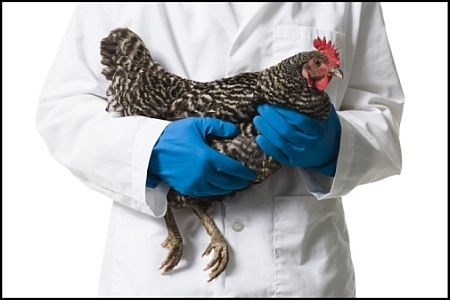YORKTON - Disease pandemics of course are not new, the 1918 influenza pandemic perhaps being the most notable with some estimates putting the death toll as high as 50 million, and of course there was the bubonic plague in the mid-1300 which killed millions more.
And, now of course we have been dealing with the COVID-19 pandemic which has touched just about every locale on the planet and a death toll of more than 6-million.
What is perhaps more concerning than the impact of COVID, and certainly it has fundamentally changed our lives the last 30 months or so, and continues with people still dying, is how the human-pandemic has occurred at the same time as a couple of major livestock diseases happening too.
Most recently in Canada there has been an outbreak of avian influenza being found in three flocks in Alberta.
The Alberta outbreak came only a short time after the flu spread across southern Ontario with the East Coast reporting cases earlier this year.
From the Centers for Disease Control and Prevention website, (www.cdc.gov) “highly pathogenic avian influenza viruses cause severe disease and high mortality in infected poultry. Only some avian influenza A(H5) and A(H7) viruses are classified as HPAI A viruses, while most A(H5) and A(H7) viruses circulating among birds are LPAI A viruses. HPAI A(H5) or A(H7) virus infections can cause disease that affect multiple internal organs with mortality up to 90 percent to 100 percent in chickens, often within 48 hours.”
While the good news is bird flu viruses do not normally infect humans, the disease is concerning in terms of what it might mean to the chicken industry.
And, we need only go back a couple of years to recall that African Swine Fever devastated the swine herd in China through 2019 with thousands of animals dying and more than a million culled in an attempt to control the disease.
Even with control measures African Swine Fever spread to Southeast Asia and eastern Europe, with cases found in Vietnam, Cambodia, Laos, Korea, Myanmar, the Philippines, Poland, Belgium and Bulgaria.
African Swine Fever is not a threat to human health and cannot be transmitted from pigs to humans.
But ASF is highly contagious and a deadly viral disease affecting both domestic and feral swine of all ages.
What is interesting in terms of COVID, ASF and Avian flu is how it affects populations which are today very much concentrated, and highly mobile allowing for rapid spread of the disease.
Human populations are increasingly clustered in huge urban centres with significant travel connections on an almost hourly basis.
Pigs and chickens are highly concentrated livestock with huge enclosed populations, and while there are typically tight biosecurity measures, still much interaction from country to country with the import and export of pigs, pork products and feedstuffs.
While the three are obviously independent incidents the commonality of crowded populations should at least be a possible red flag.

